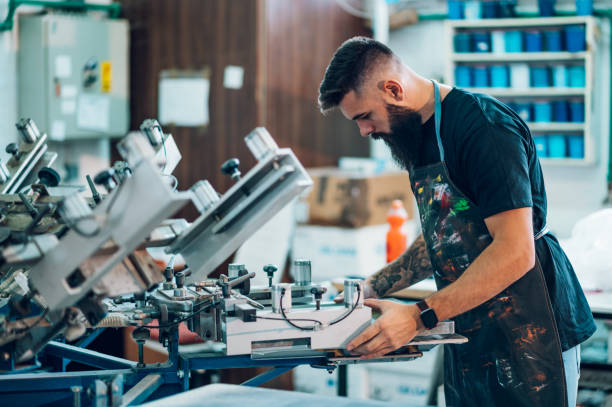DTF(Direct To Film) and sublimation are the most popular methods for creating prints by applying heat. These are the top priorities for individuals who want to make catchy prints on their clothes, t-shirts, mugs, etc. Both of these are best for creating high-quality prints. However, both have advantages and limitations. When choosing the best option for prints, consider your needs first. So, we will discuss the difference between DTF and sublimation and how to choose the perfect method for your prints.
What is DTF Printing?
What is Sublimation Printing?
Key Difference Between DTF and Sublimation
Material Compatibility
DTF (Direct To Film) is known for its fabric versatility, including cotton, polyester, blends, and even some non-textile materials. This makes it the go-to choice for custom t-shirts, hoodies, and promotional items. However, it also applies tooth light and dark fabrics, so it's the best choice for creating attractive designs.
Meanwhile, sublimation printing is limited in material compatibility. You can use it for synthetic materials, but it doesn't work on cotton or other natural fibers. However, when used on compatible materials, it offers high quality on items like flags, banners, etc. So, you should use highlight-colored substrate sublimation to achieve print accuracy. Many businesses are turning to DTF powder for sublimation because of its versatility and reliability.
Print Quality and Durability
If you are looking for high-resolution prints, DTF is a perfect choice. It offers accurate prints even for small text and detailed graphics. However, it also maintains its prints for an extended period. DTF prints will not fade with multiple washes or over time. The most significant advantage of DTF is that it can produce designer dark fabrics. The adhesive powder in DTF makes it last long and attaches firmly to the fabric.
Sublimation also offers very high quality and sharp details of prints. However, it's heavily dependent on the substrate’s polymer coating. Sublimation is just suitable on lighter fabric. The benefit of sublimation is that it produces designs with natural looks as ink becomes part of the fabric. Hence, sublimation printing is also long-lasting and perfect for items that need frequent washes.
Color Vibrancy
DTF produces vibrant colors suitable for a variety of fabrics. It can also make high-quality prints even in dark colors, so that's a plus point of the DTF printing method.
Sublimation also creates high-quality, vivid colors on light fabrics. It works best on light fabrics to give bright and eye-catching results. The dye used in sublimation also offers a wide range of colors. However, the color vibrancy in sublimation can be limited to dark substrates, and the base colors can affect the final product.
Cost and Equipment
DTF printing involves moderate initial setup costs, including a printer, unique films, and adhesive powder. On-going expenses are also low, making it cost-effective for businesses.
However, sublimation printing has higher initial costs due to the need for a sublimation printer, heat press, and sublimation inks. At the same time, the ongoing cost is relatively low. Cost-effectiveness depends on the volume of production and the printing requirements.
Pros and Cons of DTF Printing
Advantages:
- Works on various materials, including cotton, polyester, blends, leather, and nylon.
- Produces high-resolution images with vibrant colors.
- Prints withstand multiple washes without cracking or fading.
- Prints effectively on dark-colored materials.
- Moderate setup and low ongoing expenses.
Disadvantages:
- Requires practice to master the process.
- Requires a DTF printer, PET films, and a heat press.
- Each transfer must be handled individually.
Pros and Cons of Sublimation Printing
Advantages:
- Produces eye-catching prints with smooth gradients.
- The ink becomes part of the fabric, ensuring long-lasting prints that won’t fade or crack.
- Prints are embedded into the fabric, maintaining the material's original texture.
- Sublimation inks are not harmful to the environment.
Disadvantages:
- It only works on polyester and polymer-coated substrates.
- Best results on white or light-colored fabrics.
The Bottom Line
We use DTF (direct-to-film) and sublimation to create high-quality prints on fabric. Both methods are widely used in the industry nowadays. However, there’s a mild difference between DTF and sublimation. You should consider your needs when finding the process for your print. When choosing your printing method, you must consider durability, color vibrancy, cost, and material compatibility. DTF and sublimation can both produce high-quality products. So, you must select the best to meet your needs effectively.

